The Ultimate Guide to Cosmetic Dentistry

August 16, 2021
Are you over-conscious about chipped, discolored, deformed, crooked, or missing teeth? Do you feel the need to constantly cover your mouth when you talk or laugh, or tend not to smile with your teeth in photos? If yes to either, then perhaps it’s time to talk to your dentist about the range of cosmetic dentistry procedures available.
Despite its name, cosmetic dentistry isn’t just all about appearance. Understandably, some people get second thoughts about visiting the dentist if they think they’re giving in to vanity. There is definitely an element of aesthetic enhancement in cosmetic dentistry, but the effects go far beyond the superficial. In most cases, cosmetic dentistry can help correct a dental condition, that if left untreated, can cause further health problems later on.
Major strides in the field of cosmetic dentistry have discharged a range of options allowing dental professionals to make substantial improvements to misshapen, damaged, or misaligned teeth. This will enable you to chew your food easier, speak more clearer, and boost your confidence while interacting with others, especially when you unleash that killer smile.
Apart from diminishing your self-confidence, damaged or misaligned teeth can also negatively impact your general oral health if left untreated. Some of the issues outlined may indicate an underlying health issue. For example, missing teeth could be a sign of advanced gum disease or reduced bone density in the jaw.
Now, advances in technology allow for better ways to assess problems and offer improved solutions. Consider orthodontic technology. From the earlier models where braces extend outside the mouth to new Invisalign removable aligners, braces have become less intrusive, more durable, less painful, rendering quicker results. The future of cosmetic dentistry even holds more promise, with virtual and augmented reality, 3D printing, and artificial intelligence revolutionizing the industry.
Teeth’s Daily Grind
Teeth play a major part in our daily lives and have three core functions: breaks down (masticating) food, helps us to pronounce words, and shapes the face.
Teeth also play a big role in our social lives. We are naturally drawn to people who smile. In addition to its power to attract or show appreciation, research has shown that it can act on the body and mind in a range of positive ways, offering benefits for our health, and elevating moods. That confidence rests primarily on the state of our teeth.
Cosmetic Dentistry
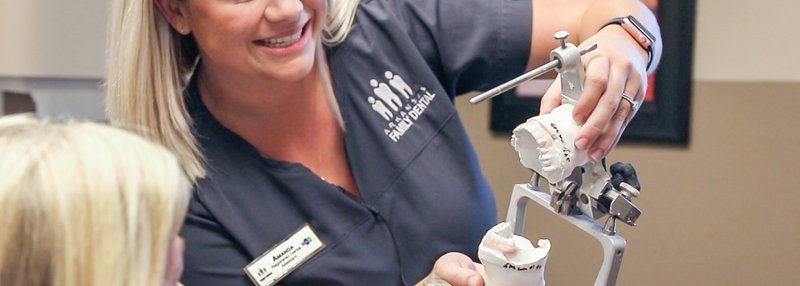
The American Academy of Cosmetic Dentistry defines the practice as “dentistry aimed at creating a positive change to a person’s teeth and smile.” While it usually involves performing dental work to improve appearance, cosmetic dentistry also takes in a range of dental procedures used to whiten discolored teeth, restore damaged teeth, or replace missing teeth.
Dental aesthetics are improved in terms of teeth color, position, shape, size, alignment, and overall smile appearance. When someone mentions cosmetic dentistry, most think of tooth whitening, porcelain veneers, or dental crowns but a cosmetic dentistry professional can provide much more.
Oral Health Often Indicates Overall Health and Vice Versa
Oral health is often an indicator of overall health. Studies show that the state of a person’s teeth and gums can contribute to the progression of certain cardiovascular and respiratory diseases. Certain conditions such as diabetes, HIV/AIDs, and osteoarthritis can weaken gums and bones including the jaw.
Periodontitis, a condition caused by poor oral hygiene, is a serious gum infection that can destroy the jawbone. Periodontitis can lead to tooth loss and a risk factor for heart and lung diseases.
Cosmetic dentistry can help prevent further damage to the teeth and gums. Filling a crown seals a tooth’s cracks which then shuts out bacteria that cause decay, and also stop bacteria from progressing. Cosmetic dentistry also helps improve a person’s self-esteem and confidence by allowing them to smile comfortably again.
What’s the Difference Between Cosmetic Dentistry and Dentistry?
Ultimately, it can be said that there is no dividing line between general and cosmetic dentistry. Both functions are handled by professionals that have earned a DMD or DDS degree.
While general dentists are often seen dealing with dental issues involving pain or hygiene, such as root canals, extractions, and cavity filling, they can also perform cosmetic procedures such as whitening and bonding. Similarly, cosmetic dentists often perform the same general procedures on patients as a precondition for cosmetic procedures. Very often, they’ll need to clean or extract certain teeth and fill crowns. In these cases, patients switch from general (extraction) to cosmetic (implant or veneer).
While there are differences between general and cosmetic dentistry, sometimes the two overlap. For example, if a patient has a decaying tooth, the tooth needs to be extracted (general dentistry) to prevent the decay from spreading further. But upon extraction, the appearance of the smile is changed. The patient can opt to get porcelain veneers (cosmetic dentistry) to replace the missing tooth.
Cosmetic Dentistry Is A Growing Industry

Owing to its increasing popularity, cosmetic dentistry is currently a $4.1 billion industry in the United States alone. According to IBISWorld, the industry grew 2.1% annually on average between 2016 and 2021.
Why is the practice becoming more popular? There are many reasons why more and more people are taking an interest in cosmetic dentistry. Here are some of the main reasons:
Increased Oral Health Awareness
Advances in oral care technology along with increased dental hygiene awareness have resulted in more people taking better care of their teeth. This heightened awareness around the importance of maintaining healthier mouths and cosmetic dentistry also helped to drive the demand for oral care products and procedures.
In addition, the ongoing COVID-19 pandemic has forced the temporary closures of many dental practices, which has led people to source oral DIY treatment and enhancement products.
Higher Disposable Incomes
Despite the temporary halt in business activity due to the pandemic, the US economy is humming again. Real gross domestic product (GDP) increased at an annual rate of 6.4% during the first quarter of 2021. Jobs are coming back, and disposable incomes are on the rise again. Plus, many families who received stimulus money earlier this year took the opportunity to undergo improvements to their well-being, including cosmetic dental surgery.
Appreciating the Value of a Smile
People have only recently begun to realize the influence that their smiles can have on their demeanor. In fact, a recent American Academy of Cosmetic Dentistry survey found that 74% of respondents believe that a less-than-beautiful smile can reduce their chances of landing a good job or maintaining a successful career. A visit to the dentist’s office is often the first step towards that.
Types of Cosmetic Dentistry
Dental Botox and Dermal Fillers
Dental Botox is a cosmetic dentistry technique using a natural purified protein that can temporarily relax muscles. Previously, dentists used Botox injections to help patients that constantly grind their teeth. Botox proved helpful in relaxing muscles around the jaw joint.
Dermal fillers use hyaluronic acid and similar substances to add fullness to areas that have lost volume and smoothness over time. Dermal fillers help smoothen wrinkles and add fullness around the mouth, thin lips, and cheeks.
Botox and fillers are unique substances designed for different uses. This distinction, however, makes them an ideal combination to treat patients who both want less aging around the face and fuller features. For example, Botox can reduce wrinkles around the face and mouth while dermal fillers provide fuller lips. The results led to happier, more confident patients with enhanced smiles.
Dentists use a tiny syringe to inject small amounts of Botox and dermal fillers just below the skin in areas around the face that’s specific to smiling. Patients are likely to experience the treatment’s full effects within 10-14 days, and it typically lasts for three or four months. Botox treatments range from $200 to $600, while fillers can cost from $500 to $700 per syringe.
Dentists across the world perform the treatment daily in a low-risk procedure. Arkansas Family Dental is qualified to administer Botox in dentistry treatments.
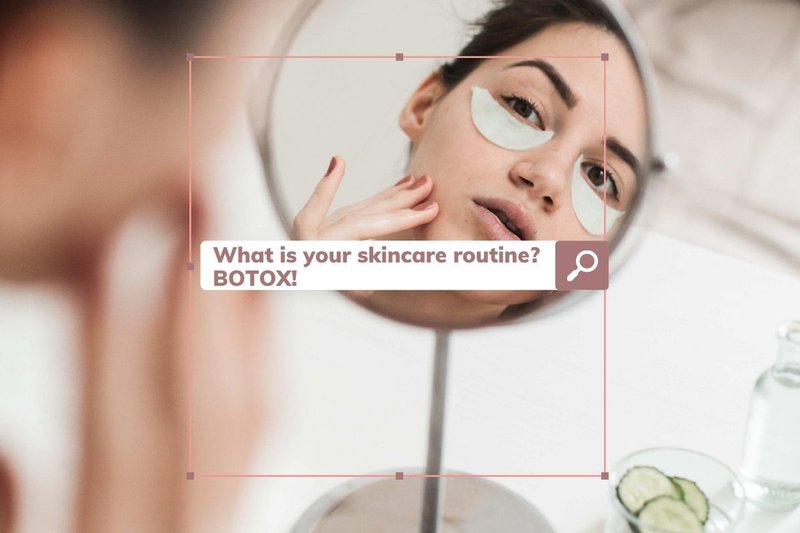
Veneers
Veneers are custom shells that fit in front of the teeth. They mask discolored, chipped, or mishappen teeth to give the patient an appearance of a complete set of healthy teeth. Veneers not only transform the color, appearance, and size of the teeth covered, they also protect the tooth’s surface and enhance a person’s smile. A veneer usually serves an aesthetic purpose, so it’s more commonly placed on the front teeth rather than on the inner teeth such as molars. Veneers do not replace missing teeth.
Types of Veneers
There are two types of veneers: permanent and removable. Whether for cosmetic or practical reasons, dentists recommend permanent veneers over temporary versions. While more convenient due to the time it takes to mold permanent ones, temporary veneers do not look as natural as the permanent variety. In addition, their removable nature makes teeth more prone to plaque buildup, which can damage the gum tissue with prolonged (but temporary) use. Note that despite the term, permanent veneers do not last a lifetime, with a lifespan of between 5-15 years.
Composite
Composite veneers are permanent veneers that use composite resin. The material used is a combination of organic matter such as the initiator, resin, and coupling agent. A filler made up of inorganic material completes the composite mix.
The dentist usually mixes a composite resin that matches the patient’s teeth. Composite veneers are not stain-resistant and also lose durability over time. On the plus side, composite veneers cause little or no damage to gum tissues.
To avail of composite veneers, patients will need a single (but lengthy) visit to the dentist. As this is a permanent fixture, it will require modifications to the tooth in the form of shavings. A single composite veneer costs between $250 to $1500 and will last for six years on average. These are easily repaired when chipped or broken.
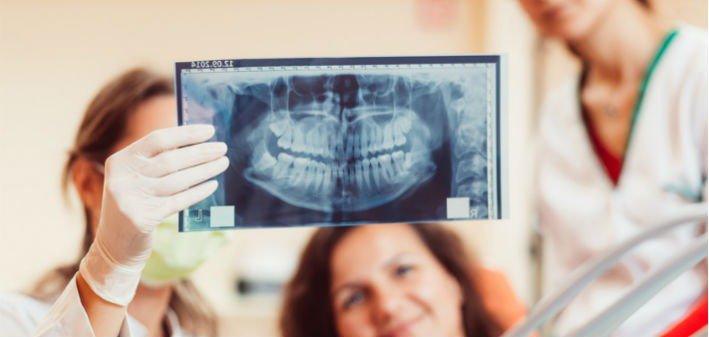
Porcelain
Porcelain veneers are often the preferred choice when considering a permanent veneer. It’s the safest, strongest, and most durable veneer type. Porcelain laminate veneers look very similar to tooth enamel and are highly resistant to stains.
A porcelain veneer is also biocompatible, which means its presence won’t irritate gum tissues. Similar to composites, porcelain veneers will require tooth shaving to fit. Once affixed, porcelain veneers are strong enough to withstand chipping or breakage. These factors explain why porcelain veneers are among the most expensive, often costing between $1000 to $2500 per tooth. However, this represents a good investment, as a porcelain veneer can last up to 15 years.
Lumineers
Lumineers are not a type, but a brand of special, ultra-thin porcelain veneers. These are made of ultra-thin porcelain laminate material and require minimal preparation before placement. Being ultra-thin, Lumineers do not require tooth shaving before application.
Like porcelain veneers, Lumineers can hide chipped, discolored, or irregularly shaped teeth. Given their translucence, Lumineers do not work well in hiding severely discolored teeth.
Lumineers are also expensive, between $800 to $2000 per tooth. These aren’t as cost-effective as porcelains, though. A Lumineer can only last half the lifespan of a porcelain veneer. It’s also more prone to damage or fracture because of its thinness.
Teeth Whitening
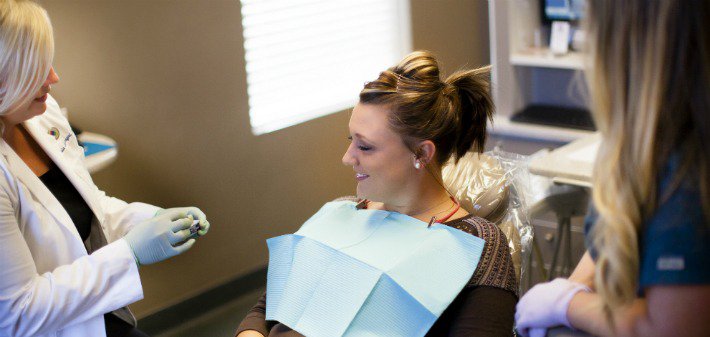
Many people equate white, shiny teeth as the embodiment of good health and hygiene. Some scientists also believe that milky white, straight teeth are a sign of good genetics. Whatever the case, Americans, it seems, have placed a premium on perfectly shaped lily-white teeth, with 40% of Americans saying they would not go on a second date with someone with yellow or crooked teeth.
Unfortunately, not all of us are blessed with dazzling pearly whites. In fact, a 2019 New York Post article stated that seven out of ten Americans are dissatisfied with the appearance of their teeth; with teeth color or rather discolor the prime reason for their dissatisfaction.
Covid-19 restrictions have triggered a surge in DIY teeth whitening products and procedures. Mordor Intelligence put the global teeth whitening market value at $6.14 billion in 2020, projected to rise to $8.2 billion by 2026.
Arkansas Family Dental offers many teeth whitening services, including the Brighten Teeth for Life Program, that will make your smile radiate.
Whitening Toothpaste
For those burdened with surface stains on their teeth, but who regard a dentist consult premature, there’s whitening toothpaste. Using whitening toothpaste is the most basic and inexpensive way to whiten one’s teeth. Depending on the brand, active ingredients can include baking soda, abrasives, or whitening chemicals. These are used with regular toothpaste to help reduce surface stains or produce a reflective appearance.
Whitening toothpaste works great as a starter pack for those new to the whitening game. At the least, it won’t dent the budget much. Popular brands cost between $30-$50 a tube. A few weeks of regular use might produce positive results, but likely to be only slight improvements.
Over-the-Counter Teeth Whitening Kits
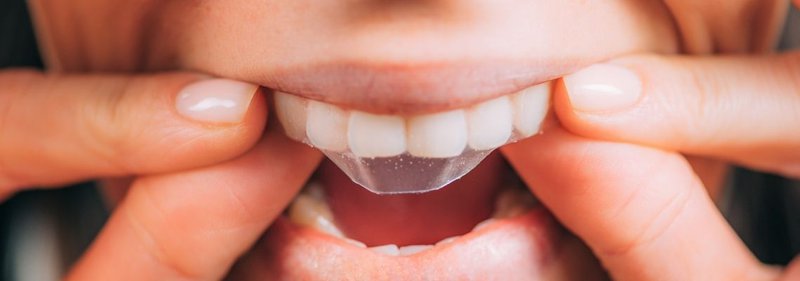
Teeth whitening kits include an assortment of products and tools that apply peroxide or other bleach-like chemicals to remove stains from teeth. These contain stronger versions of the chemical abrasives found in whitening toothpaste.
However, the chemicals found in these products are less than full strength so as to minimize any damage to the gum line. Failure to follow instructions exactly, or wrongly placing trays or mouthpieces may lead to less than desirable results, or worse, lead to harmful effects.
Some of the better-known products like Crest White Strips or Snow Teeth Whitening, guarantee visible results within a few days. Compared to whitening toothpaste, whitening kits pack more power and also cost around double, between $50-100 for a single kit.
Teeth Whitening Procedure
Visiting the dentist for teeth whitening advice represents the next level to consider if whitening toothpaste or teeth whitening kits didn’t get the job done. It gives the dentist an opportunity to examine patients and recommend the ideal option based on each person’s specific condition.
Professional teeth whitening procedures are more expensive but yield better results compared to DIY kits. Cosmetic dentistry professionals can help ensure that the whitening process covers each tooth’s entirety and not leave any areas untreated. A professional procedure also guards better against the risk of overbleaching. At the same time, the dentist can also examine the gums for any damages from the procedure.
Take-Home Kits. Many dentists issue custom take-home whitening options. While the equipment and the ingredients might seem similar to over-the-counter kits, dentist-issued kits usually contain more potent bleaching agents. Patients can expect results between one or two weeks, and costs will average between $150 to $200 per kit.
Zoom Teeth Whitening. The Zoom Tooth Whitening process takes in a 45-minute session at a cosmetic dentistry office. The dentist uses hydrogen peroxide gel (25%) allied with a special brightening lamp. A typical Zoom whitening session costs $500 on average, with instant results.
Boost. Similar to the Zoom whitening procedure, Boost also uses a hydrogen peroxide compound but does not require any special light. The procedure usually takes longer, about 1-2 hours at an approximate cost of $500. Results are immediate.
Dental Crowns
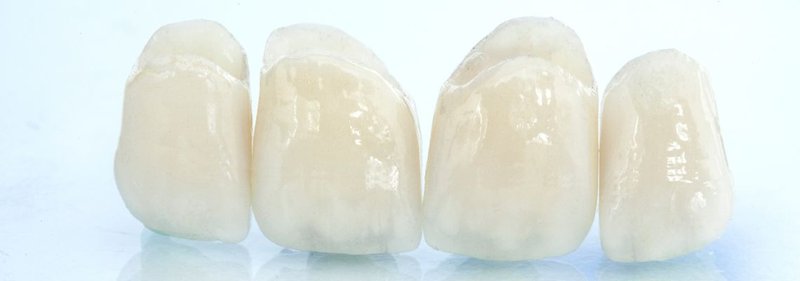
A dental crown is a tooth-shaped cap designed to cover a damaged tooth. Covering a damaged tooth helps two ways. First, the cap seals the tooth to prevent further damage. Second, the cap helps restore the tooth’s original shape and size. Crowns also lend strength to the already damaged tooth, as well as improve its overall appearance.
Crowns consist of various materials, including porcelain, ceramic, zirconia, metals, compounds, and resins. As the materials vary in strength and durability, costs differ. A dentist can best provide advice on which crown type would be best to use in specific conditions. This includes taking into account the tooth’s location and the gum position relative to the crown. The dental practitioner will also consider the color of the surrounding teeth, how much of the original tooth remains, and how much the original tooth visibly shows when the mouth is open. The crown’s ultimate function will also help determine the type of material to use.
Permanent Crown
The permanent crown is the one that’s designed to partly replace the tooth’s function and appearance. Considering that permanent crowns are expected to last a lifetime, precious metals such as gold, platinum, or chrome alloys, or ceramics (including porcelain) are often used for their durability.
Temporary Crown
The temporary crown is a resin or compound-based copy of a permanent crown and is a substitute while the permanent crown is in production. Dentists use a weaker adhesive to keep the temporary crown in place until the permanent crown becomes available for permanent fitting.
One-Day Crown
The one-day crown is a permanent crown that is 3D printed or milled in the dentist’s office. Using a ceramic block, a permanent crown is created based on the patient’s x-rays. As the name suggests, a one-day crown can be fitted within a single dentist visit.
Onlay (3/4) Crown
Fitting in whole dental crowns is sometimes unnecessary especially if the affected tooth is more than 50% intact. Onlay crowns that cover only part of the tooth help protect the remaining parts and reinforces them as well.
Costs of Crowns
Crowns range between $800 to $1,500 depending on the material used and the size of the tooth. Crowns containing precious metals such as gold and platinum are naturally more expensive and can cost as much as $2,500. Gold’s non-corroding qualities and malleability render it a popular choice for those who can afford it. Its bright, reflective color doesn’t make it ideal for front teeth though.
It’s important to note that the costs of crowns go up depending on how extensive the pre-op would be. In many cases, root canals or additional extractions might be needed.
Dental Implants
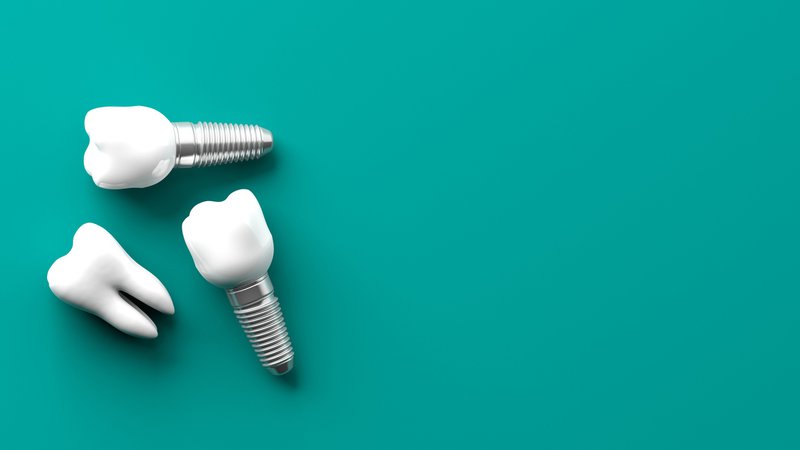
Dental implants are metal fixtures surgically affixed to your jawbone below the gums, onto which implant prosthesis such as implant crowns, bridges, or dentures are mounted.
Dental implants are among the more expensive dental cosmetic treatments, ranging from $500 for a mini dental implant to $40,000 for a full bridge. Despite the price tag, dentists usually recommend this as it offers one of the safest and most durable solutions to replacing lost teeth. In terms of mouthfeel, dental implants offer the closest experience to having original teeth.
Most conventional dental implants consist of three components. These are:
- Implant post. Also called the screw, the implant post serves as the anchor of the dental implant. Resembling a tooth’s root, the implant post is surgically affixed to the jaw.
- The abutment. The abutment is a metal part that connects the prosthesis to the implant post. The type of abutment used in an implant depends on the kind of prosthesis used.
- Implant Prosthesis. The implant prosthesis can either be an implant crown, bridge, or denture. It’s the visible part of the dental implant that functions as the replacement teeth.
Types Of Dental Implants
There are two types of conventional dental implants: endosteal and subperiosteal. In addition, there are mini dental implants that do away with separate abutments.
Endosteal implants are the most common type of dental implants. These consist of either titanium cylinders or blades that are surgically inserted into the jawbone at the approximate location of the missing teeth. After surgery, patients will need about one month to six weeks for the bone to osseointegrate the implant before inserting the abutment, or the connector between the implant and the new teeth.
Subperiosteal implants are similar to endosteal, except the implants rest on top of the jawbone just under the gum tissue. Subperiosteal implants are recommended for less-than-ideal situations such a bone loss in the patient’s jaw. This type of implant is also used when the patient’s jaw’s health or shape isn’t ideal for endosteal implants. Over time, even subperiosteal implants will osseointegrate into the bone.
Mini dental implants (MDIs) are smaller versions of dental implants that help stabilize prosthetic teeth in the lower jaw. MDI posts range between 1.8 to 3.3 mm in diameter and 10 to 15 mm in length. In contrast, normal implants are between 3.4 to 5.8 mm in diameter.
In addition, mini dental implants do not use posts with abutments attached. Instead, they feature a screw-type post with a ball at one end and a rubber O-ring that secures the crowns. MDIs usually protrude over the gums, while conventional implants remain secured under. Mini dental implants are ideal for patients who do not have sufficient bone density in the jawbone to accommodate conventional dental implants.
Which Dental Implant To Use?
Arkansas Family Dental can make the recommendation on which dental implant is most suitable based on your jawbone size, shape, and condition. Dental implants can be expensive, with prices ranging between $1,500 to $6,000 per tooth. Dental bridges held by two dental implants can fetch around $5,000, while full arch implants are in the $40,000 or more category. MDI procedures are faster and relatively cheaper than regular dental implants but still steep at around $500 to $1,500 per implant. Its size means it’s also more prone to breakage compared to normal dental implants, so replacement procedures are more common.
While dental implants are costly, they offer major benefits. Because the crowns are artificial and lack biological material, they cannot get cavities. That means going through drilling and filling procedures will not be necessary for those teeth, and if you are great at caring for dental implants, they can last a lifetime!
However, and even if cost is not a factor, not everybody can qualify for a dental implant. The ideal candidate for a dental implant should be in good general and oral health. Adequate jawbone strength is required to support the implant. More importantly, candidates should have healthy gum tissue and be free of periodontal disease.
Six Month Smiles
Six Month Smiles is an alternative option for adults who need their teeth straightened but don’t have the time nor patience to undergo a 2-3 year orthodontic brace program. This new system presents a faster and simpler way to get straighter teeth by wearing clear braces for six months. Patients can consult a dentist about the Six Month Smiles process instead of an orthodontist.
The dentist records a patient’s teeth impressions and sends these to Six Months Smiles. The company then sends the customized patient tray kit based on the patient’s impression. These kits contain positioned brackets set in bonding trays. With the kit in hand, it’s a matter of fitting the braces to the patient, who will need to wear them for six months.
Six Month Smiles can help adults with minor straightening issues, especially in the front areas of their teeth. Costs for this treatment range between $3,000 to $4,500.
Invisalign
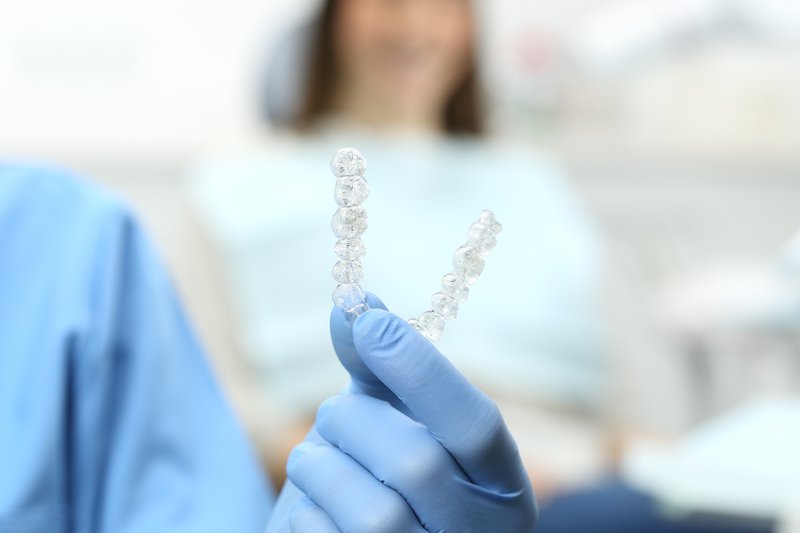
Invisalign is a process that helps correct misaligned teeth and can correct underbite, overbite, and gaps in your teeth. Straight teeth also mean healthier teeth and gums, which can prevent larger problems down the road.
Invisalign is a modern solution to hone your smile that is incredibly easy to work with. You simply wear a fitted BPA-free plastic mouthpiece that is adjusted periodically as your smile is corrected.
Invisalign and metal braces are two different ways to achieve the same goals of straightened teeth. With Invisalign, you wear a mouthpiece every day but you have more flexibility when it comes to the foods you can eat and how you clean your teeth when compared to the regimen that comes with traditional braces.
A major difference between the two treatments comes down to aesthetics. Metal braces are highly noticeable and held together by a system of wires. Wearing metal braces can feel uncomfortable while affecting your self-esteem, especially among teenagers. Braces are often a necessary part of adolescence, but if you are looking to realign your smile as an adult, you may not want the ‘adolescent aesthetic that comes with braces. Invisalign offers an alternative that is almost completely clear and works around the clock to correct your smile.
Beyond looks, the biggest difference between braces and Invisalign is the time factor. While braces can take a couple of years to correct your teeth and your smile, Invisalign takes approximately half the time. Invisalign treatments must be done under the supervision of a trained dentist, and the team at Arkansas Family Dental is well qualified to oversee your treatment.
Post-Procedure Habits

Undergoing any of the many cosmetic dentistry procedures is a major step in the quest for perfect, healthy smiles. However, it’s far from the last. Reassessing your oral care routines after a procedure is essential for your beaming smile, and, of course, healthier teeth and gums.
You’ve already invested substantial time and money to get that perfect smile, why not add a rigorous oral hygiene habit to keep your set of pearly whites in optimal condition.
Make Good Oral Care Habits Routine
If you haven’t started the routine of brushing your teeth for two minutes at least twice a day, now is a good time to do so. Studies show that brushing your teeth for less than two minutes increases the chances for plaque to harden. The less time used to brush your teeth, the harder it becomes to remove plaque. Practice careful, deliberate brushing, and avoid brushing too hard so as to make the gums bleed.
Flossing once daily can also help remove all food particles between teeth that attract bacteria. Round off your oral hygiene program by scheduling an appointment with your dentist every six months for a proactive checkup.
Avoid Tooth Stains by Brushing or Rinsing After Eating

Drinking strong beverages like coffee, tea, wine, or soda can stain your teeth. The same goes for dark foods and fruits. If brushing is not possible after eating or drinking such foods, it’s recommended to at least rinse the entire mouth with mouthwash. Or, at least drink a full glass of water to lessen the effect of these teeth-staining foods and drinks.
Chew Carefully and Not Absent Mindedly
Especially with new insertions like crowns, veneers, or bonding, try to avoid using new teeth when chewing hard food. In addition, absentmindedly chewing candy, ice, or inedible objects like pens can potentially ruin restoration work. Avoid using teeth to open packets, cut thread, or bite your fingernails.
Continue with Whitening Toothpaste and Schedule Touch-Ups
Normal use and wear and tear can turn back any whitening procedure. It’s not a bad idea to continue the routine by using whitening toothpaste at home. However, choose a non-abrasive formula for your daily use. A stronger formula product can wear down veneers or crowns and even weaken bonded teeth. Scheduling regular touchup sessions with the dentist is also recommended.
Guard Your Teeth

Habitual grinding or clenching teeth can wreak havoc on cosmetic restorations. Seeking advice on the possibility of using a mouthguard at night. This prevents your upper and lower teeth from wearing each other out. Note that mouthguards will not relieve the symptoms or address the root problem. In cases of excessive teeth grinding or clenching, consult your dental practitioner to get ultimate relief from the condition.
Mouthguards are recommended to protect your teeth from the blows of close-contact competition. Accidents do happen on the sports field, and using the correct protection can prevent expensive emergency restorations to damaged teeth, veneers, or crowns. People wearing braces are at higher risk, as braces can slice lips and tissue. Instead of opting for generic mouthguards, ask your dentist if they can make custom-fitted mouthguards for the more athletic members of the family.
Quit Smoking
Smoking is a habit incompatible with the practice of taking good care of teeth and gums. WebMD lists a number of potential dental health problems attributed to smoking.
- Chemicals from smoking affect saliva flow and can hasten the buildup of bacteria and plaque.
- Smoking can affect blood circulation. This can restrict blood flow in the gums and impede their normal function leading to tooth loss.
- Smoking can reduce bone density in the jaw.
- Heavy tobacco use can turn teeth yellow and cause bad breath.
- Smoking delays the recovery process for dental procedures such as tooth extraction or oral surgery
- Compared to nonsmokers, smokers are six times more likely than nonsmokers to develop oral cancers, with around 90% of patients who’ve been diagnosed with mouth, throat, or lip cancer using tobacco.
Arkansas Family Dental, Your One-Stop Cosmetic Dentistry Solution

Effective oral hygiene habits must be instilled in children from an early age so they can learn to care for their teeth properly. This assures they have a healthy mouth and smile as they grow into adults. Regular visits to the dentist are an important component of a responsible oral care program.
Arkansas Family Dental is your complete dental care services facility that offers veneers, tooth whitening, dental crowns, dental implants, as well as botox and dermal fillers.
Our mission is to treat you like family! From teething toddlers to senior citizens, Arkansas Family Dental helps take care of your family’s dental needs in a caring and modern environment, while educating them toward a state of optimal oral health.
From regular cleanings to cosmetic dentistry procedures, our professional team of dentists and hygienists is waiting to welcome you to the AFD family, address your concerns, and walk you through your options.

Connect With
Call (501) 232-6273 or request an appointment online to set up your first visit. We’ll be in touch soon.
